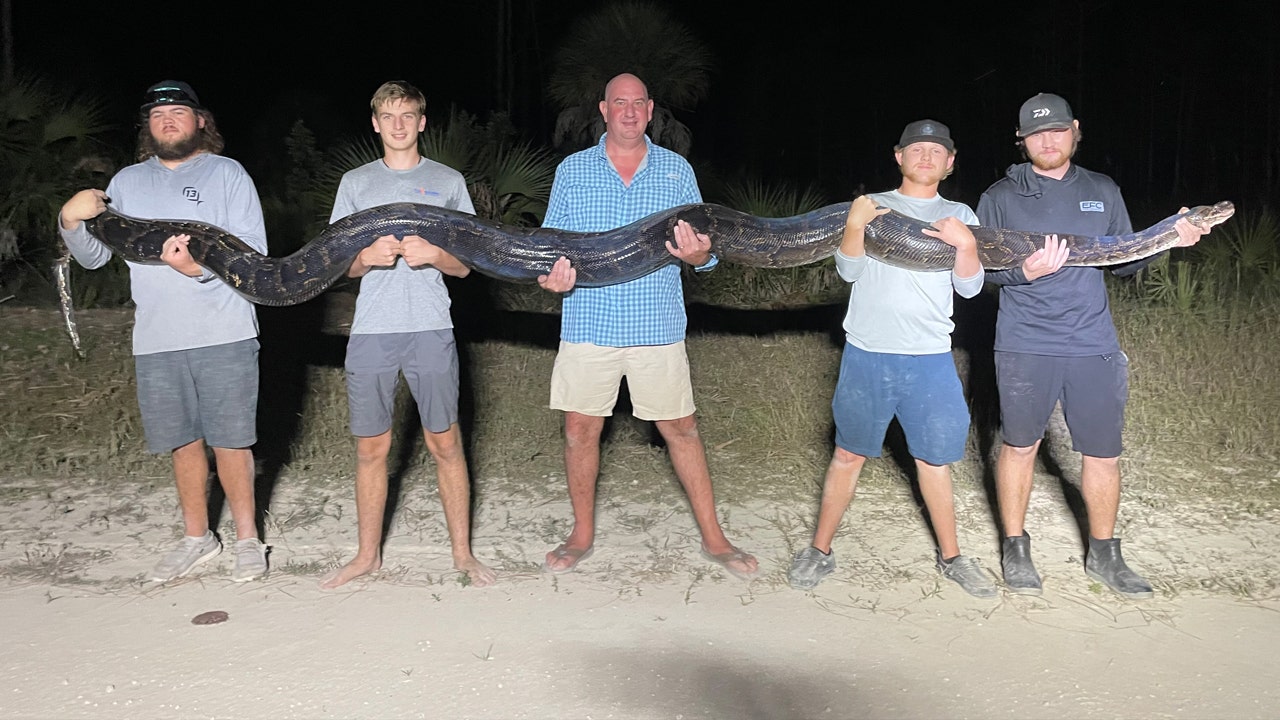Can a single snake redefine an ecosystem? A 198-pound Burmese python isn't just a reptile; it's a keystone, and understanding its impact is critical to understanding the health of its environment.
A 198-pound Burmese python stands as a remarkable representative of the Python bivittatus species, underscoring the impressive size potential inherent within these snakes. This weight, a significant figure, positions it well within the upper echelon of typical Burmese python dimensions. Although weight offers a primary insight, a precise length measurement would offer a more complete understanding of its overall scale. A multitude of interwoven elements shape this weight, encompassing everything from its dietary intake and the environmental pressures it faces to its individual genetic makeup.
The implications of such a large Burmese python specimen, one reaching 198 pounds, resonate deeply within its ecosystem. Its predatory activities inevitably influence the delicate balance of local wildlife populations, potentially triggering alterations within the food web. Conversely, its very size underscores pressing conservation imperatives, highlighting the vital need for both habitat preservation and vigilant ecological management. This pythons sheer mass raises key inquiries about its individual health status, its potential influence on neighboring wildlife populations, and the pressing demand for continued in-depth research to fully understand its role in the environment.
- Deleon Tequila Diddy Decoding The Brand Marketing Strategy
- Guide To Moviesflix Bollywood The Ultimate Streaming Platform
No specific historical figure, scientific luminary, or cultural icon is directly linked to any individual Burmese python, including this 198-pound specimen. The focus remains squarely on the ecological and biological significance of the animal itself.
| Ecological Profile: 198-Pound Burmese Python | |
|---|---|
| Species | Python bivittatus (Burmese Python) |
| Specimen Weight | 198 pounds (approximately 89.8 kg) |
| Typical Diet | Varied, including rodents, birds, mammals; dependent on size & availability. |
| Habitat | Subtropical and tropical regions; often near water sources. |
| Geographic Distribution | Native to Southeast Asia; invasive in parts of North America (e.g., Florida). |
| Ecological Role | Apex predator; influences prey populations and ecosystem structure. |
| Conservation Status | Vulnerable (due to habitat loss and overexploitation in native range). Invasive populations pose separate ecological challenges. |
| Primary Threats | Habitat destruction, hunting/capture, invasive species management. |
| Conservation Strategies | Habitat preservation, invasive species control, public education. |
| Further Information | |
| For detailed species information, refer to the National Geographic Burmese Python Profile |
- Breaking Is Alicia Still Alive In 2024 The Real Status
- Explore Gosford Park Filming Locations Map A Visual Guide

:max_bytes(150000):strip_icc():focal(749x0:751x2)/burmese-python-tout-110823-3658378bb32e4e10bb679c2c48eb9050.jpg)
